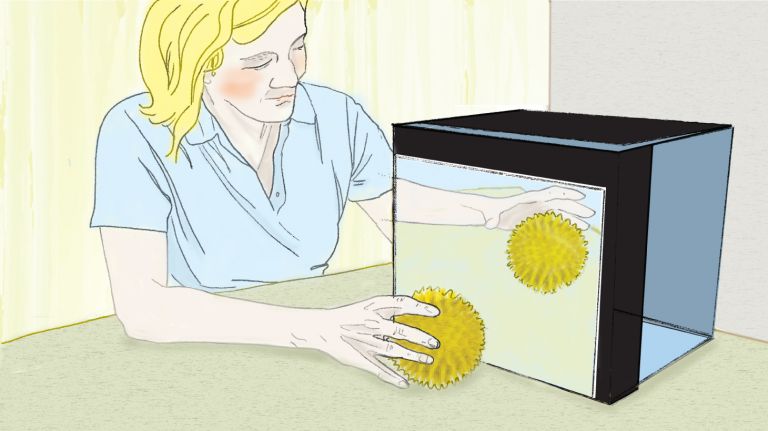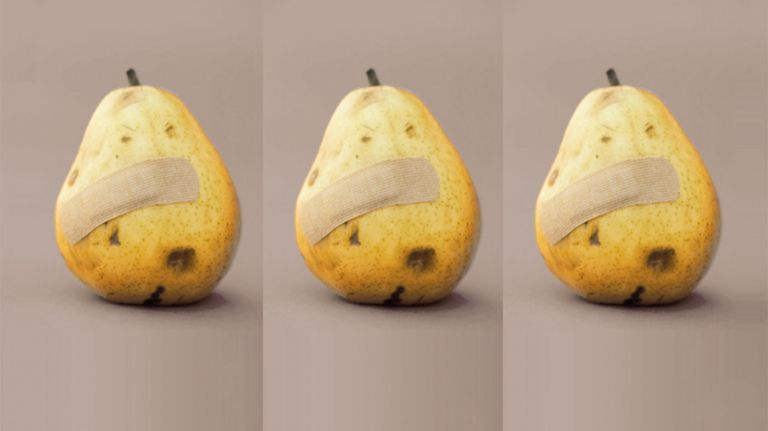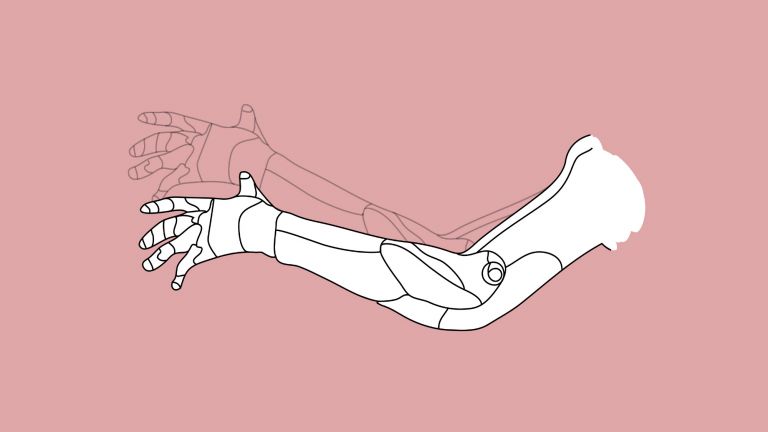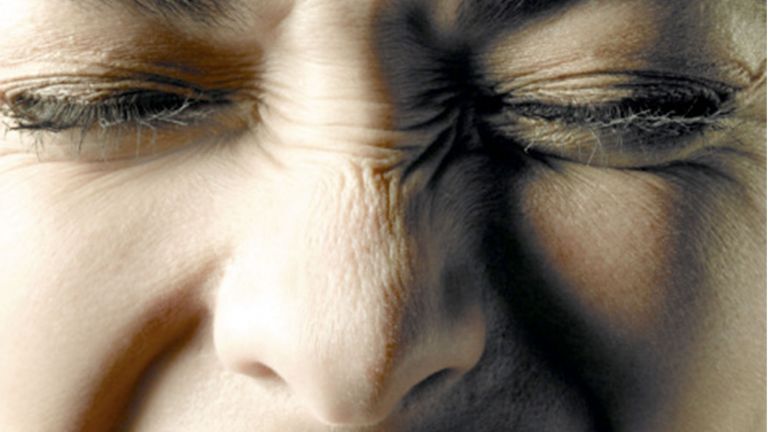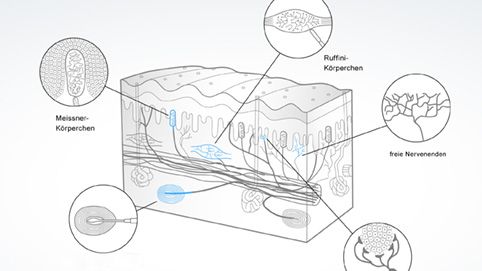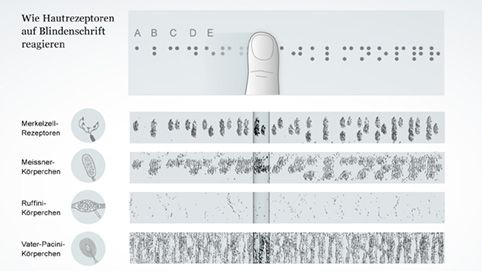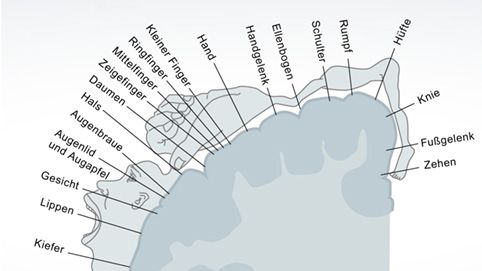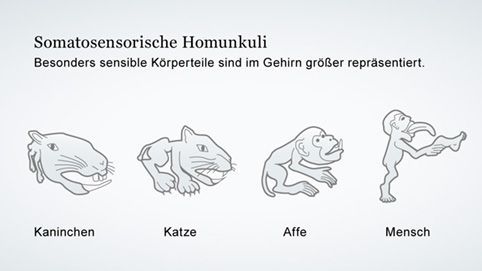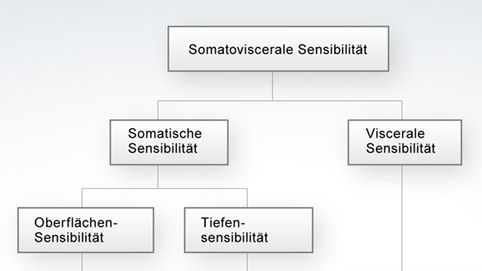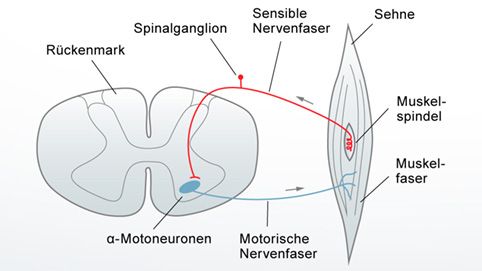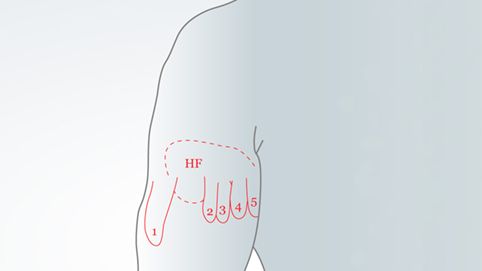Prof. Dr. Peter W. Reeh
Transduktion, Integration, Plastizität in primären nozizeptiven Neuronen
Projektleiter: P.W. Reeh
Untersuchung des primären nozizeptiven Neurons, seiner elektrophysiologischen und neurochemischen Antworten auf noxische Reize und chemische Mediatoren. Isolierte Präparationen, kultivierte Spinalganglienzellen sowie transfizierte Zellinien werden benutzt, um Aktionspotentiale, Ionenströme, Calciumeinstrom und Freisetzung von Substanz P und CGRP zu studieren. Ziel ist, nozizeptive Transduktion und Integration von Reizen sowie Möglichkeit pharmakologischer Intervention aufzuklären. Spezielles Thema ist Sensibilisierung durch Gewebsazidose und Entzündungsmediatoren sowie deren intrazelluläre Signaltransduktion. Dies schließt ein die Untersuchung transgener Mäusestämme, denen verschiedene metabotrope und ionotrope Rezeptoren oder thermisch aktivierte Ionenkanäle fehlen (z.B. TRPV1).
Position / Tätigkeit:
Projektleiter
Homepage:
http://www.physiologie1.uni-erlangen.de/de/Mitarbeiter/VCard.shtml?Reeh
Mayer S., Izydorczyk I., Reeh P.W., Grubb B.: Bradykinin-induced nociceptor sensitization to heat depends on COX-1 and COX-2 in isolated rat skin. Pain 130 (2007) 14-24.
Fischer M., Reeh P.W. Sensitization to heat through G-protein coupled receptor pathways in the isolated sciatic mouse nerve. Europ. J. Neurosci. 25 (2007) 3570-3575.
Zimmermann K., Leffler A., Babes A., Cendan C.M, Carr R.W., Kobayashi J., Nau C., Wood J.N., Reeh P.W.: Sensory neuron sodium channel Nav1.8 is essential for pain at cold temperatures. Nature 447 (2007) 855-858.
Leffler A., Linte R.M., Nau C., Reeh P.W., Babes A: A high-threshold heat-activated channel in cultured rat dorsal root ganglion neurons resembles TRPV2 and is blocked by gadolinium. Europ. J. Neurosci. 26 (2007) 12-22.
Lennerz J. K. M., Dentsch C., Bernardini N., Hummel T., Neuhuber W. L., Reeh P. W.: Electrophysiological characterisation of vagal afferents relevant to mucosal nociception in the rat upper oesophagus. J. Physiol. (Lond.) 582.1 (2007) 229-242.
Agarwal N., Amaya F., Pacher P., Constantin C., Brenner G., Michalski C.W., Tegeder I., Marsicano G., Marian C., Batkai S., Fischer M.J., Reeh P., Kunos G., Lutz B., Kress M., Woolf C.J., Kuner R.: Cannabinoids mediate analgesia largely via peripheral type 1 cannabinoid receptors in nociceptors. Nat. Neurosci. 10 (2007) 870-879.
Derow A., Izydorczyk I., Kuhn A., Reeh P.W., Pethö G.; Prostaglandin E2 facilitates noxious heat-induced spike discharge but not iCGPR release from rat cutaneous nociceptors. Life Sciences 81 (2007) 1685-93.
Hager U., Hein A., Lennerz J.K.M., Zimmermann K., Neuhuber W.L., Reeh P.W.: Morphological characterization of rat MrgC receptor and functional analysis of agonists. Neurosci. 151 (2008) 242-254.
Leffler A., Rehner D., Wellhöfer S., Fischer M.J., Kistner K., Sauer S.K., Gavva N.R., Reeh P.W., Nau C.: The vanilloid receptor TRPV1 is activated and sensitized by local anaesthetics causing a release of calcitonin gene-related peptide. J. Clin. Invest. 118 (2008) 763-776
1.99 Spitzer M., Reeh P.W. , Sauer S.K.: Mechanisms of potassium- and capsaicin-induced axonal CGRP release: involvement of L- and T-type calcium channels and TRPV1 but not sodium channels. Neurosci. 151 (2008) 836-842.
Eberhardt M, Hoffmann T, Sauer SK, Messlinger K, Reeh PW, Fischer MJM: Calcitonin gene-related peptide release from intact isolated dorsal root and trigeminal ganglia. Neuropeptides 42 (2008) 311-317.
Hoffmann T, Sauer SK, Horch RE, Reeh PW. Sensory transduction in peripheral nerve axons elicits ectopic action potentials. J Neurosci. 28 (2008) 6281-6284.
Hoffmann T, Sauer SK, Horch RE, Reeh PW. Projected pain from noxious heat stimulation of an exposed peripheral nerve ? A case report. Europ. J Pain 13 (2009) 35-37.
Zimmermann K, Hein A, Hager U, Kaczmarek JS, Turnquist BP, Clapham DE, Reeh PW. Phenotyping sensory nerve endings in vitro in the mouse. Nat. Protocols 4 (2009) 174-196.
Kichko TI, Reeh PW. TRPV1 controls acid- and heat-induced CGRP release and sensitization by bradykinin in the isolated mouse trachea. Europ. J. Neurosci. 29 (2009) 1896-1904.
Noel J, Zimmermann K, Busserolles J, Alloui A, Diochot S, Guy N, Reeh P, Eschalier A, Lazdunski M. The mechano-activated background K+ channels TRAAK and TREK-1 control both warm and cold perception. EMBO J. 28 (2009) 1308-1318.
St. Pierre M, Reeh PW, Zimmermann K. Differential effects of TRPV channel block on polymodal activation of cutaneous nociceptors, in vitro. Exp. Brain Res. 196 (2009) 31-44.
Forster A, Reeh PW, Messlinger K, Fischer MJM. High concentrations of morphine sensitize and activate mouse dorsal root ganglia via TRPV1 and TRPA1 receptors. Mol. Pain 5 (2009) 17.
Ditting T, Tiegs G, Rodionova K, Reeh PW, Neuhuber W, Freisinger W, Veelken R. Do Distinct Populations of Dorsal Root Ganglion Neurons Account for the Sensory Peptidergic Innervation of the Kidney ? Am J Physiol Renal Physiol. 297 (2009) F1427-1434.
Kistner K, Zimmermann K, Ehnert C, Reeh PW, Leffler A. The tetrodotoxin-resistant Na+ channel Nav1.8 reduces the potency of local anaesthetics in blocking C-fiber nociceptors. Pflügers Arch. - Europ. J. Physiol. 459 (2010) 751-763.
Auer J, Reeh PW, Fischer MJM. Acid-induced CGRP release from the stomach does not depend on TRPV1 and ASIC3. Neurogastroenterol. Motility 22 (2010) 680-687.
Finzsch M, Schreiner S, Kichko T, Reeh P, Tamm ER, Bösl MR, Meijer D, Wegner M. Sox10 is not only required for Schwann cell specification, but also for maintenance of cell identity and progression beyond the immature Schwann cell stage. J. Biol. Chem. 189 (2010) 701-712.
Fuchs D, Birklein F, Reeh PW, Sauer SK. Sensitized peripheral nociception in experimental diabetes of the rat. Pain 151 (2010) 496-505.
Fischer MJ, Leffler A, Niedermirtl F, Kistner K, Eberhardt M, Reeh PW, Nau C. The general anesthetic propofol excites nociceptors by activating TRPV1 and TRPA1 rather than GABAA receptors. J Biol Chem. 285 (2010) 34781-34792.
Vellani V, Kinsey AM, Prandini M, Hechtfischer SC, Reeh P, Magherini PC, Giacomoni C, McNaughton PA. Protease activated receptors 1 and 4 sensitize TRPV1 in nociceptive neurones. Mol Pain 6 (2010) 61-78.
Bremer M, Fröb F, Kichko T, Reeh P, Tamm ER, Suter U, Wegner M. Sox10 is required for Schwann-cell homeostasis and myelin maintenance in the adult peripheral nerve. Glia 59 (2011) 1022-1032.
Engel MA, Izydorczyk I, Mueller-Tribbensee SM, Becker C, Neurath MF, Reeh PW. Inhibitory CB1 and activating/desensitizing TRPV1-mediated cannabinoid actions on CGRP release in rodent skin. Neuropeptides 45 (2011) 229-237
Engel MA, LefflerA, Niedermirtl F, Babes A, Zimmermann K, Filipovic MR, Izydorczyk I, Eberhardt M, Kichko T, Mueller-Tribbensee SM, Khalil M, Siklosi N, Nau C, Ivanovic-Burmazovic I, Neuhuber W, Becker C, Neurath MF, Reeh PW. TRPA1 and substance P mediate colitis in mice. Gastroenterology (2011) Epub ahead of print.
Weller K, Reeh PW, Sauer SK. TRPV1, TRPA1, and CB1 in the isolated vagus nerve ? axonal chemosensitivity and control of neuropeptide release. Neuropeptides (2011) Epub ahead of print.
Brenneis C, Sisignano M, Coste O, Altenrath K, Fischer MJ, Angioni C, Fleming I, Brandes RP, Reeh PW, Woolf CJ, Geisslinger G, Scholich K. Soluble epoxide hydrolase limits mechanical hyperalgesia during inflammation. Mol Pain 7 (2011) 78 Epub ahead of print.
Engel MA, Khalil M, Siklosi N, Mueller-Tribbensee SM, Neuhuber WL, Neurath MF, Becker C, Reeh PW. Opposite effects of substance P and calcitonin gene-related peptide in oxazolone colitis. Dig Liver Dis (2011) accepted.
Engel MA, Khalil M, Mueller-Tribbensee SM, Becker C, Neuhuber WL, Neurath MF, Reeh PW. The proximodistal aggravation of colitis depends on substance P released from TRPV1-expressing sensory neurons. J Gastroenterol. (2011) accepted.
Linz P, Freisinger W, Heinlein S, Reeh PW, Fiedler C, Siegel K, Scrogin KE, Neuhuber W, Veelken R. Norepinephrine reduces \xcf\x89-conotoxin-sensitive Ca2+-currents in renal afferent neurons in rats. American J Physiol ? Renal Physiol (2011) accepted.
Universität Erlangen-Nürnberg
UniversitätInstitut:
Institut für Physiologie und Pathophysiology
Arbeitsschwerpunkt:
Molekulare Neurobiologie, Zelluläre Neurobiologie
Anschrift:
Universitätsstraße 17
91054 Erlangen
DE
Telefon:
+49 (0) 9131-852 2228
